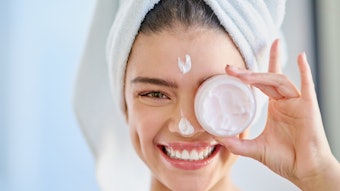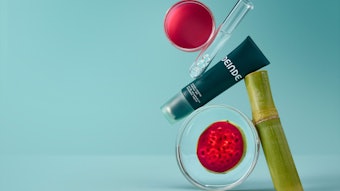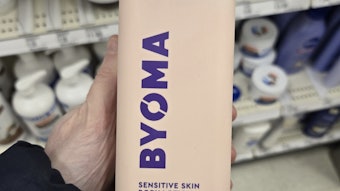The self-tanning market has been steadily growing due to advances in formulation technology as well as the consumer trend to seek out safer tanning solutions. Ongoing concerns surrounding the harmful effects of the sun’s ultraviolet (UV) rays, along with endorsements from anti-cancer societies, have created the perfect environment for self-tanning products. By 2016, sales of U.S.-produced self-tanners are expected to increase to $940.6 million, at an average annual growth rate of 12.8%; in 2012, it was estimated that overall revenue for this market would increase by 18.1% to $609.3 million.1
The strong growth in self-tanning products is correlated with a decreased rate of growth in the tanning salon industry, which is expected to grow by just 1.1%. Consumer concerns have surrounded not only the demand for improved sun protection, but also a growing bias toward tanning beds. Studies completed by the Skin Cancer Foundation concluded that indoor UV tanners are 74% more likely to develop melanoma than individuals who do not use tanning salons.2 Regulation may also put significant restrictions on tanning salons, as many states are looking to adopt legislation to ban or require parental approval to use tanning salons.3
After a period of lackluster sales in this category, cosmetic companies have seized the opportunity and effectively communicated this safe alternative. Brands in both the mass and prestige segments have captured market share due to significant formulation advances as well as targeted marketing campaigns. They also have targeted consumers who want to maintain a tanned look or prolong the effects of a natural UV-induced tan.
A Start in Self-tanning
Over a half century has passed since the first self-tanner formulations were developed. Dihydroxyacetone (DHA) still remains the most effective active ingredient in the market. As is the case with many breakthroughs, DHA was accidently discovered. Many readers know the story of the University of Cincinnati’s Berry Wittgenstein, who was using the compound as an oral supplement for children challenged by glycogen storage disease. After administering it to them, Wittgenstein saw spots of brown form on skin where it accidentally had been spilled. Several experiments later, it was evident that this ingredient could be used to darken the skin tone.4
My (Tsolis’) introduction to self-tanners came in my first month at the bench. Although I was formulating an anti-aging serum, a scientist working for Lahanas asked if he could apply a lotion containing DHA to my arms—as the more senior people avoided such evaluations for good reason. After placing the lotion at various points on my forearm, we watched different intensities of color develop, from orange to brown. “It’s February—a long-sleeve month,” scientist Saul Miklean, my new friend, told me.
Miklean was a pharmacist who had launched and patented some of the first major self-tanning products in 1959. He proudly displayed his patent reference in the Merck Index under the chemical DHA.5 Until he reached his 90s, Miklean worked to improve formulations with new technologies and continued publishing patents late in his career. By reviewing this chemistry and conducting countless experiments, yielding both promising and poor results, scientists have gained a better understanding of what it takes to make a stable, effective self-tanner.
DHA Chemistry
DHA [C3H6O3] is a natural carbohydrate—basically a sugar. In fact, together with its doppelgänger, glyceraldehyde, it is the simplest possible carbohydrate. About 3% of DHA in water exists in the glyceraldehyde form. Carbohydrate chemistry is an extremely rich and complex science. Carbohydrates have scores of possible reactions due to their dynamic structures and abundance of functional groups. DHA is supplied in its crystalline form and naturally occurs as a dimeric solid. Once it solubilizes in water, it converts into a monomeric form and is ready to undergo a reaction.
This material typically does not penetrate beyond the stratum corneum (SC), i.e., dead skin surface layer, which is where the skin undergoes a non-enzymatic browning or Maillard reaction. Here, the carbonyl group on the molecule reacts with certain proteins and amino acids on the skin. The reaction is similar to the browning of foods during cooking. It’s the reason that toast is brown; in this case, the high temperature of the toaster causes the indigenous proteins and carbohydrates to undergo the Maillard reaction.6
DHA reacts with skin proteins and readily develops covalent bonds, which occurs at room temperature. The skin changes to a brownish color and produces pigments on its surface called melanoidins. This reaction usually can be seen 1–2 hr after application of DHA and can take up to 24–48 hr to fully develop. The result is a water-resistant, darker-colored skin that can only be removed as the dead cells of the SC undergo exfoliation.
DHA Application
DHA-containing products historically have a reputation of delivering an unappealing orange color, uneven and streaky color development, and odor issues. As raw materials and formulations improved, however, products evolved that addressed these issues. The industry also has continued to combine DHA in formulas to address traditional skin care needs, such as moisturizers, and anti-aging and body slimming products. It is compatible in o/w and w/o emulsions as well as aqueous lotions and gels.
Incorporating DHA into products that have a larger and a more traditional oil phase allows for a better consumer experience. Not only are such products much more aesthetically pleasing, they allow the product to spread more uniformly, achieving better color development—although the drying time will be longer than for traditional hydro-alcoholic systems. DHA products can range from subtle color development in the 1–3% concentration range, to full self-tanners with levels up to 10%.
Stability issues: As with many formulations, certain parameters must be adhered to when developing a product containing DHA. Even before formulation, the material must be properly stored, as it is slightly hygroscopic. If the material is stored in or exposed to higher temperatures, it degrades quickly and loses efficacy. Further, by-products such as formaldehyde and formic acid can be produced when it degrades in higher temperatures and these products are responsible for reduced pH values, which can contribute to an acidic smell.
Generally, DHA should be refrigerated in properly sealed containers as exposure to heat induces reaction. The ingredient’s efficacy should be periodically tested before it is used in lab or production batches to ensure it has not degraded. Color development is directly correlated to its concentration, and typical instabilities of DHA-based products result in yellowing and odor development.
Besides water, DHA is soluble in ethanol, glycerin and glycols; it has poor solubility in lipophilic solvents. The ideal pH of a DHA formulation is usually in the 3.0–4.0 range. The pH level of a DHA-containing formula drops over time to approximately 3 due to the formation of organic acids. Therefore, a buffering system of a base without an amine group or a phosphate buffer, and citric acid is ideal to maintain DHA performance and prevent degradation. If the formula or phase into which DHA is added is exposed to a highly acidic or alkaline system, the material will degrade and not provide the proper reaction on the skin. This ideal pH range should not only be targeted for the final formula, but also any intermediary steps to which the material is exposed during the process. The pH of the final product may also decrease over time, especially in high level DHA products (typically 5–10%). This common attribute reinforces the importance of a buffer system to maintain proper pH.
Due to its activity diminishing at higher temperatures, DHA can only be added cold and during the cool down steps in a process, as the rate at which DHA degrades dramatically increases in temperatures above 40°C. If a cold emulsion is not being processed, DHA should be one of the last ingredients added, which is typical for other heat-sensitive materials such as preservatives and actives.
Thickening with DHA: Certain thickeners cannot be used at the low pH levels required for DHA-containing formulas. Traditional polyacrylic acid derivatives and thickeners, with limited efficacy in low pH, will not properly thicken; on the other hand, raising the pH will degrade the DHA. Using cellulose-derived materials, hydroxypropyl guar and silica, as well as waxes and fatty alcohols to build up the product’s structure, is therefore preferable. Some companies have developed acrylate-based thickeners that are stable at very low pHs and highly compatible with DHA. Many of these are based around acrylate and taurate chemistries.7
Incompatible ingredients: Several ingredients also led to a gradual breakdown of the DHA active, yielding poor results and instabilities. Materials such as nitrogen-containing amines and proteins rapidly degrade DHA, and should not be part of the formula. If taurate-based thickeners are utilized, extra care must be taken as taurates are derived from taurine, 2-aminoethanesulfonic acid, a primary amine. Thus, when utilizing taurate-based chemistry, it is imperative for the supplier to ensure there are no primary or secondary amines present, as they will degrade DHA. Although most components for common raw materials are known, exotic actives and extracts should be combined within a DHA solution to check for reactivity and ensure the active is compatible with DHA itself before adding it into a formula. The same holds true for fragrance oils and other complex multicomponent additives.
Oxygen and oxidizing agents also show incompatibility with DHA and should be avoided. Further, great care must be taken to avoid the presence of metals, especially iron, copper, manganese and titanium, which oxidize DHA. The use of chelating agents and passivated equipment is therefore recommended.
Malodor during use: Malodor upon product application is another inherent problem with DHA formulations. It is caused by the DHA binding to skin’s reactive sites, which in turn produces these odor compounds. Although fragrance can mask some of the malodor, this binding mechanism varies from person to person and may be more severe in some cases. Some research has focused on capturing these malodor compounds generated post-reaction. If an odor develops in the formula itself, this could be a sign that the DHA in the product is degrading.
Skin preparation: Although DHA requires specific formulation guidelines, skin preparation is also a variable that will affect the reaction. Research has shown, for instance, that exfoliation can lead to a better tanning experience and longer color detainment.8 Since exfoliation removes loose epidermal cells, and “levels” the skin surface, it assists in achieving a deeper, longer-lasting and more uniform color on the skin.
Packaging: Packaging also plays an important role in product stability and efficacy. Poorly sealed and older products typically have a yellowed appearance, signaling degradation. Properly sealing the container and ensuring it is not exposed to heat will prolong product performance. Preventing air from entering the package will prevent premature reactions from occurring and further degrading DHA. The typical shelf life after opening DHA-containing products is approximately six months.
DHA in sunscreens? A trend in past decades has been to combine DHA with sunscreens. Although inorganic sunscreens such as titanium or zinc oxide cannot be used due to their tendency to react with DHA, organic sunscreens are commonly used. Changes in the U.S. Food and Drug Administration’s (FDA’s) SPF Monograph make this combination questionable, as issues are arising with conflicting usage instructions.
New Approaches to DHA
Although significant research is focused on mimicking the reaction between DHA and epidermal proteins, DHA remains the only ingredient the FDA recognizes as a self-tanning material. Some companies have tried to accelerate the reaction by combining DHA with flavonoids and amino acids. In the case of amino acids or other amines, dual compartment dispensing systems are required to keep the amino acids separate from DHA until the product is used. The use of these excipients allows for a more consistent color tone and color development, helping to “standardize” the amino acid content on the skin. Other research revolves around looking at similar molecular structures and reactive sites. These approaches can assist with the color development of DHA, as well as provide a limiting change in color on their own. Reducing sugars have this capability, and combinations of DHA with erythulose are already on the market.9
Conclusions
It seems that DHA will remain the primary focus in the self-tanning segment for years to come. Besides considering the limitations reviewed here, formulators should look for signs of degradation by putting samples in full stability settings and multiple temperatures. If strong odor or discoloration occurs, it would be wise to test the DHA level of the product to see if it is degrading. Also, since DHA-containing products are very packaging-dependant, it would be prudent to place final package pieces in these various settings as well. With additional materials and formulations being developed in low pH settings, DHA-based products will surely come in new forms and textures to open the door to new consumers.
References
Send e-mail to [email protected].
1. A Kaczanowska, Self-tanning product manufacturing in the US, IBIS Market Research Report, available at www.prweb.com/releases/2011/12/prweb9024616.htm (Dec 2011)
2. A Halpern, Indoor tanning increases melanoma risk by 74 percent, available at www.skincancer.org/media-and-press/Press-Release-2010/indoor-tanning-increases-melanoma-risk-by-74-percent-press-release, NYC Sloan Kettering Cancer Center (Accessed Feb 19, 2013)
3. D Clair, National conference of state legislatures—Indoor tanning restrictions for minors—State by state comparison, Insider Health Newsletter, available at www.ncsl.org/issues-research/health/indoor-tanning-restrictions (Mar 2012)
4. B Wittgenstein, Reaction of dihydroxyacetone (DHA) with human skin callus and amino compounds, J Invest Derm 36 283–286 (1961)
5. U.S. Pat 2,949,403, Dihydroxyacetone compositions for tanning the human epidermis, Andreadis and Miklean (1960)
6. LC Maillard, Action of amino acids on sugars. Formation of melanoidins in a methodical way, Compt Rend 154 66 (1912) 7. Gel-creams, Seppic website, available at www.seppic.com/cosmetics/gel-cream-@/1019/view-399-searticle.html?lang=en (Accessed Feb 19, 2013)
8. A Galdi, P Foltis and C Oresajo, Sunless tanning products, in ZD Draelos, ed, Cosmetic Dermatology Products and Procedures, Wiley-Blackwell Publishers, NY (2010)
9. U.S. Pat 6451293, T Schreier and R Jermann, Combination of erythrulose and a reducing sugar with self-tanning properties (Sep 17, 2002)










